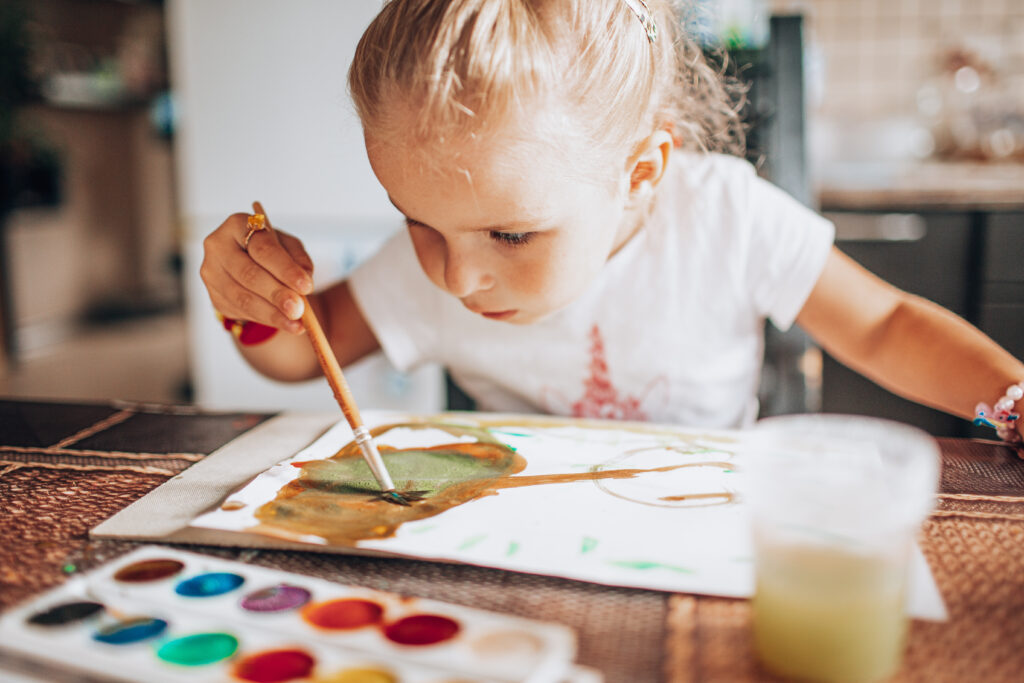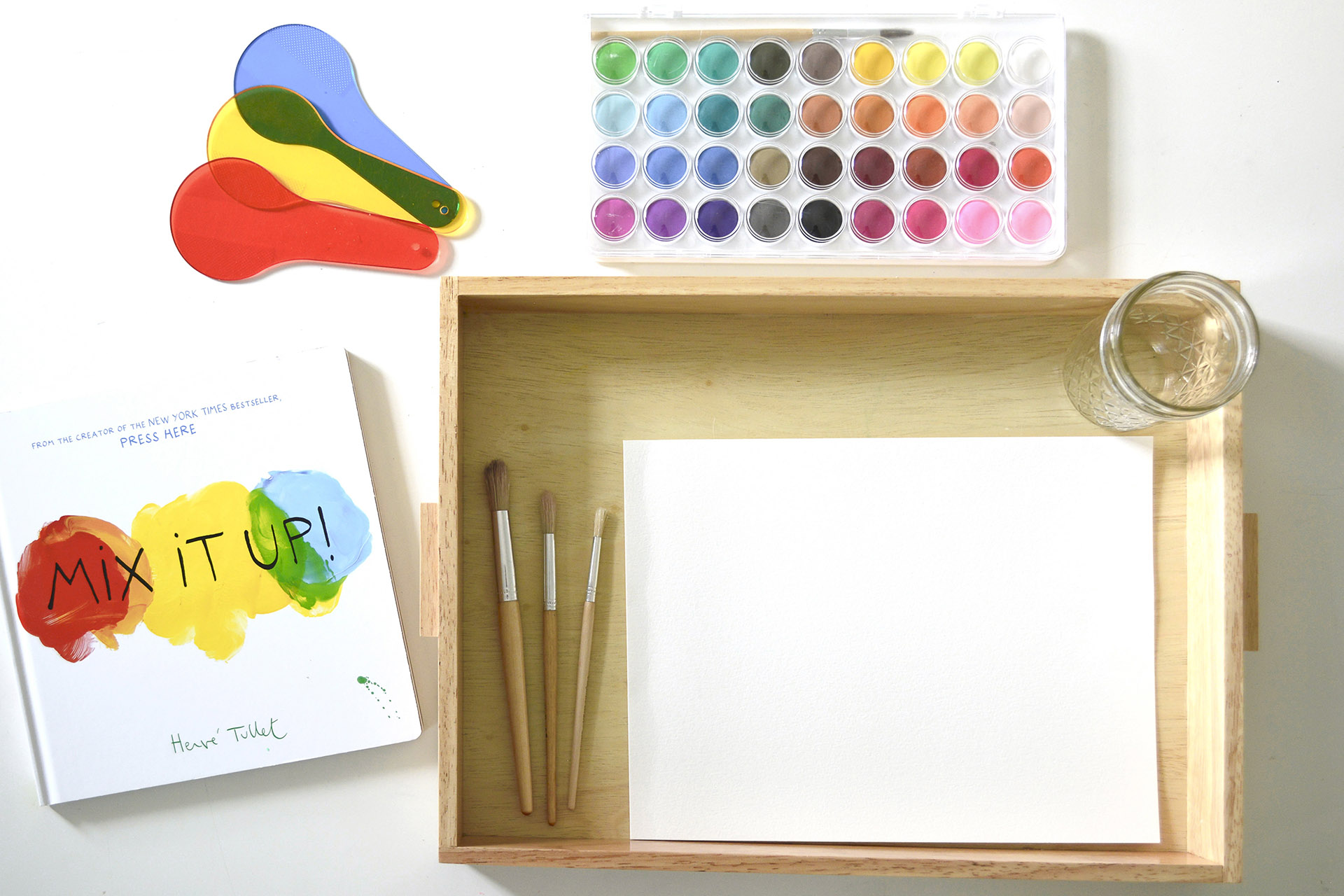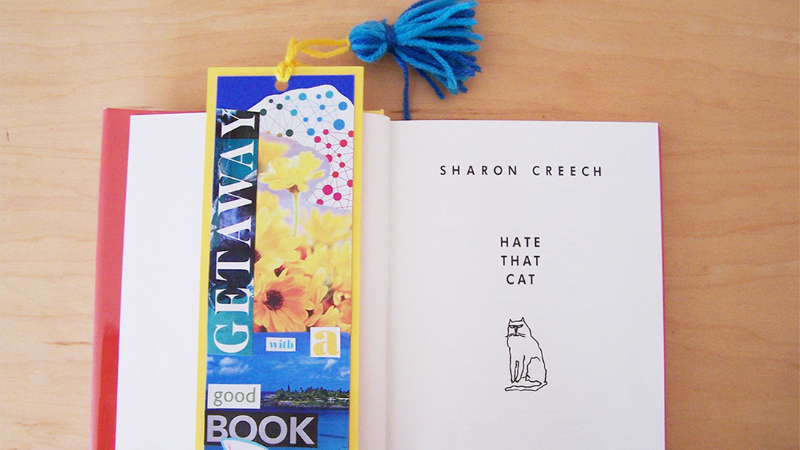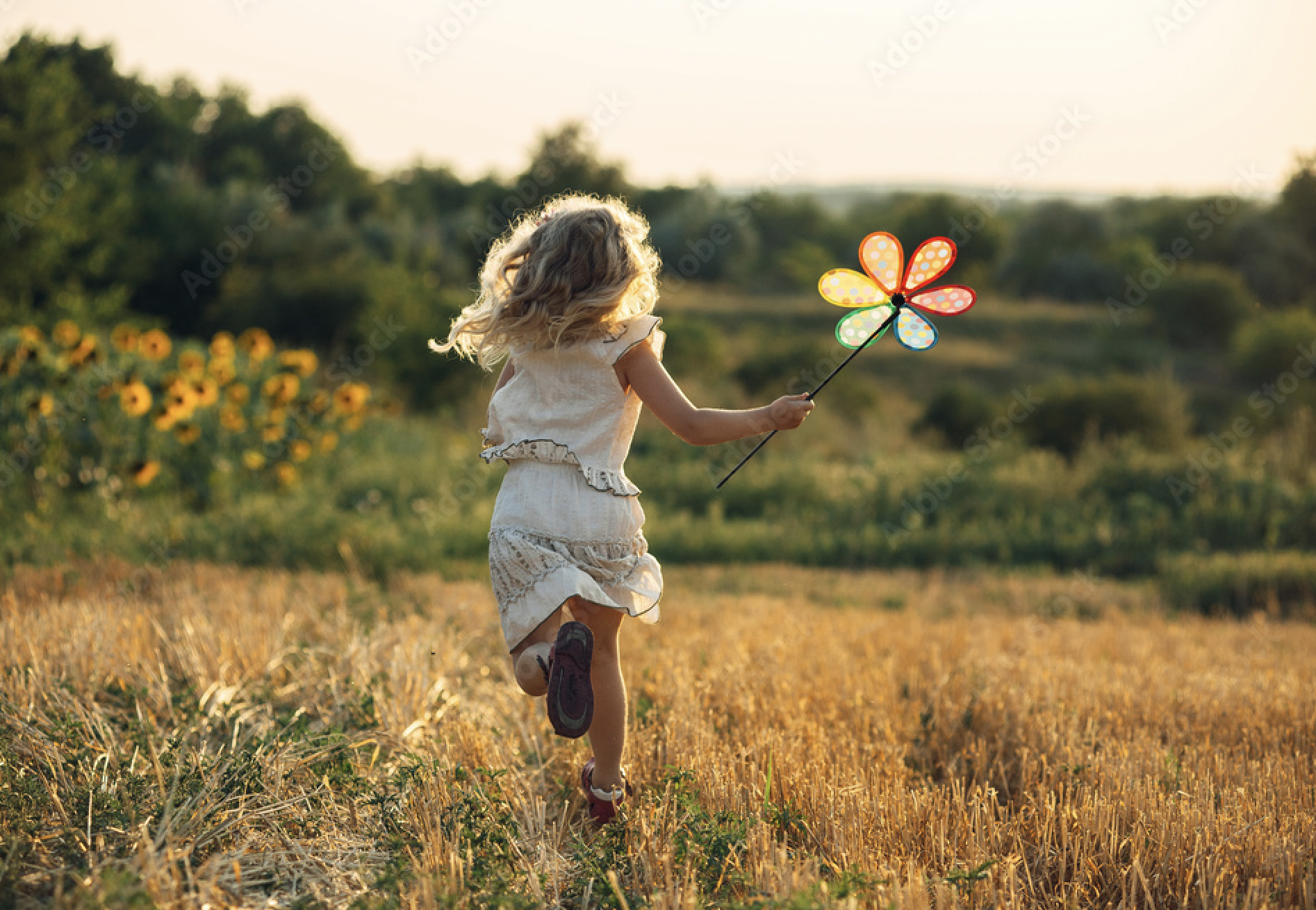“The senses, being explorers of the world, open the way to knowledge.” ~Maria Montessori
Art is highly valued in the Montessori classroom, and its value in the Playful Learning Studio is no exception. We love providing children with daily opportunities to imagine, create, and express themselves through the artistic process.
Maria Montessori found the act of painting to be very practical in nature; in her view, the act of creative expression is secondary. First and foremost, painting refines a child’s fine motor skills by:
- Strengthening the muscles in a child’s hands, fingers, and wrists
- Enabling them to learn a proper grip
- Controlling the amount of paint and water on the brush
- Improving hand-eye coordination
- Building spatial awareness
- Making marks on paper
… all of which are skills needed for learning how to write!
In addition to reinforcing all of these fine motor skills, we also can’t underestimate how teaching a child to paint introduces her to the basics of color and even adds in a bit of scientific discovery (mixing colors).
Materials:
- Heavy Paper or Watercolor Paper
- Watercolor Paints (these are our favorite)
- 2-3 Paintbrushes (various sizes)
- Small Jar of Water
- Paper Towel (to dry off the paintbrush)
- A Tray (to contain the mess and water spillage)
- Apron or Old T-Shirt (to protect your child’s clothing)
Now get ready to introduce your child to the joy of watercolor:
- Start with whatever colors you want, but we suggest beginning with the primary colors (red, yellow, blue). Set them out one at a time in the beginning, and then gradually add in a new color. This will engage your child’s interest, and she will be excited when a new color is offered … and can experiment with color mixing!
- Show her how to wet the brush in the jar of water and then touch the brush to one color of paint. A great tip for a really young child (up to 24 months) is to put a few drops of water in the paint ahead of time, so that all she has to do is touch the brush to the color. You can still teach her how to clean off her brush between colors, but having the paint already wet can be helpful to the process!
- Let her make brushstrokes on a piece of paper. Encourage her to use different amounts of water and paint to see what happens.
- Remind her to clean her brush with water after each color and to clean up any spills with the paper towel. If she has too much water on her brush, show her how to gently wipe the brush on the paper towel.
We also love using these playful verbal cues:
- Dip your brush into the jar of water and give its bristles a good drink so it’s ready to paint.
- Gently touch the brush to the color you want to use and swirl it around the paint like a ballerina.
- Move the brush across the paper like it’s dancing to music.
- When your brush is thirsty, dip it into the jar of water again and let it drink like a little bird sipping from a pond.
Or even saying something as simple as, “in the water, in the paint, on the paper” repeated over and over will help children understand the importance of wetting the brush before using it with the paints.
The most important thing to remember is to always encourage fun, creativity, and experimentation. Art is a process (there’s no right or wrong way to do it), and each child is different. Be patient and supportive, remember to promote independence, and let your child explore at her own pace!







